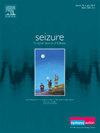术前磁共振成像病灶识别算法在小儿和年轻成人局灶性皮质发育不良相关癫痫中的应用。
IF 2.7
3区 医学
Q2 CLINICAL NEUROLOGY
引用次数: 0
摘要
研究目的本研究旨在评估用于检测局灶性皮质发育不良的基于表面的自动可解释核磁共振成像分类器的性能和可推广性:这是一项回顾性队列研究,纳入了国立儿童医院(CNH)癫痫手术(FCD 和 MRI 阴性)和神经影像(健康对照)数据库中的 MRI 数据,以及德国波恩公开的 FCD II 型数据集。临床特征和结果摘自患者记录和/或现有数据库。如果受试者进行了 3T 癫痫协议 MRI 检查,则将其纳入研究对象。将手动分割的FCD掩膜与多中心癫痫病灶检测(MELD)FCD检测算法生成的自动掩膜进行比较。计算灵敏度/特异性:结果:CNH共纳入39名FCD药物抵抗性癫痫(PRE)患者、19名健康对照组患者和19名磁共振成像阴性患者。波恩有 85 名 FCD II 型患者,其中 68 人通过了预处理。在这些数据集中,MELD 的性能(灵敏度)各不相同:CNH FCD-PRE(54%);波恩(68%);磁共振成像阴性(44%)。在多变量回归中,FCD IIB 型病理预示着 MELD 自动检测病变的几率更高。对 MELD 识别出的病灶群进行切除/消融术的四名患者均获得了恩格尔Ⅰ型结果:我们验证了MELD自动可解释FCD分类器在不同的FCD-PRE儿科人群中的表现。我们还证明了该分类器在独立的FCD II型儿科癫痫患者队列中具有相对较好的表现,并在磁共振成像阴性PRE的儿科人群中具有模拟现实世界的价值。本文章由计算机程序翻译,如有差异,请以英文原文为准。
Application of preoperative MRI lesion identification algorithm in pediatric and young adult focal cortical dysplasia-related epilepsy
Objective
The purpose of this study was to evaluate the performance and generalizability of an automated, interpretable surface-based MRI classifier for the detection of focal cortical dysplasia.
Methods
This was a retrospective cohort incorporating MRIs from the epilepsy surgery (FCD and MRI-negative) and neuroimaging (healthy controls) databases at Children's National Hospital (CNH), and a publicly-available FCD Type II dataset from Bonn, Germany. Clinical characteristics and outcomes were abstracted from patient records and/or existing databases. Subjects were included if they had 3T epilepsy-protocol MRI. Manually-segmented FCD masks were compared to the automated masks generated by the Multi-centre Epilepsy Lesion Detection (MELD) FCD detection algorithm. Sensitivity/specificity were calculated.
Results
From CNH, 39 FCD pharmacoresistant epilepsy (PRE) patients, 19 healthy controls, and 19 MRI-negative patients were included. From Bonn, 85 FCD Type II were included, of which 68 passed preprocessing. MELD had varying performance (sensitivity) in these datasets: CNH FCD-PRE (54 %); Bonn (68 %); MRI-negative (44 %). In multivariate regression, FCD Type IIB pathology predicted higher chance of MELD automated lesion detection. All four patients who underwent resection/ablation of MELD-identified clusters achieved Engel I outcome.
Significance
We validate the performance of MELD automated, interpretable FCD classifier in a diverse pediatric cohort with FCD-PRE. We also demonstrate the classifier has relatively good performance in an independent FCD Type II cohort with pediatric-onset epilepsy, as well as simulated real-world value in a pediatric population with MRI-negative PRE.
求助全文
通过发布文献求助,成功后即可免费获取论文全文。
去求助
来源期刊

Seizure-European Journal of Epilepsy
医学-临床神经学
CiteScore
5.60
自引率
6.70%
发文量
231
审稿时长
34 days
期刊介绍:
Seizure - European Journal of Epilepsy is an international journal owned by Epilepsy Action (the largest member led epilepsy organisation in the UK). It provides a forum for papers on all topics related to epilepsy and seizure disorders.
 求助内容:
求助内容: 应助结果提醒方式:
应助结果提醒方式:


